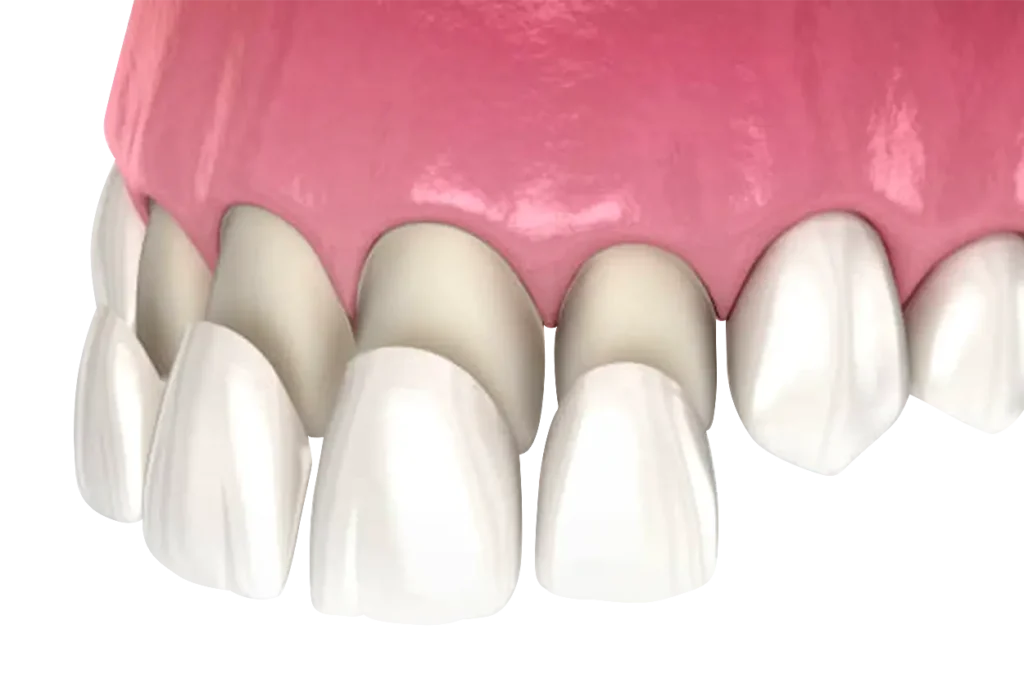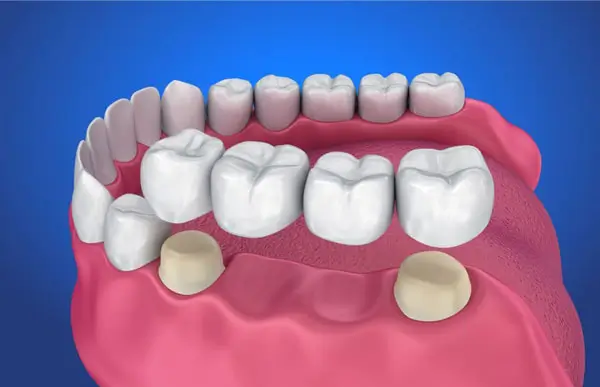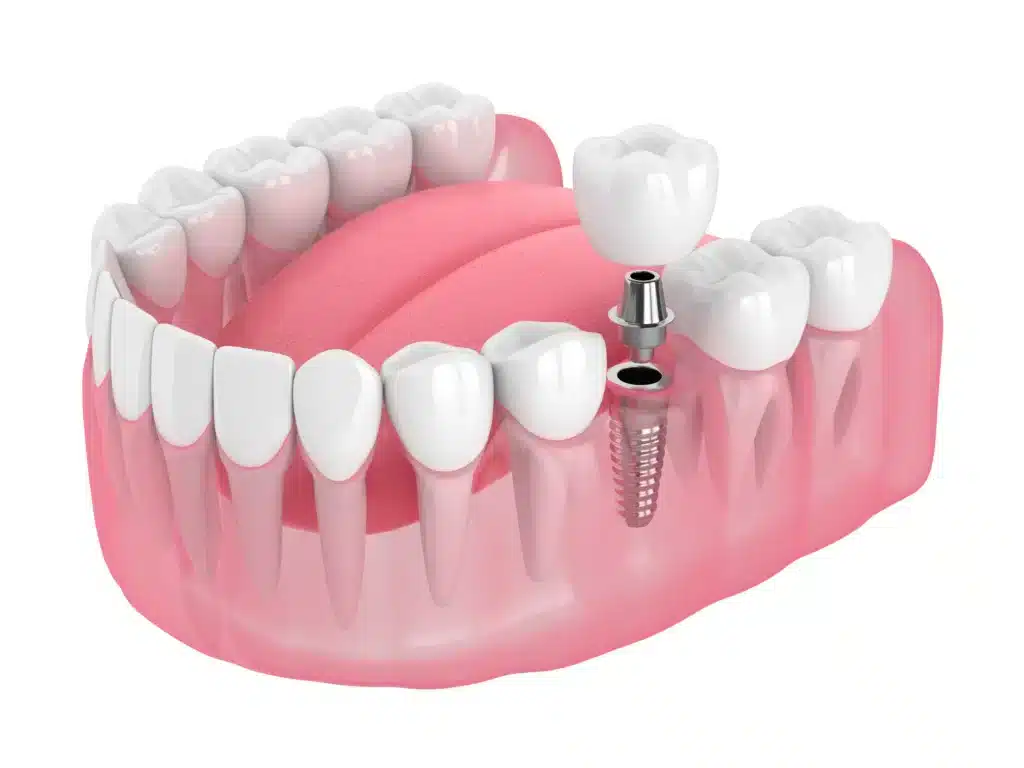Losing a tooth is more than just a cosmetic issue—it affects how you chew, speak, and even how your jawbone holds up over time. Prosthodontic treatment offers a powerful solution to these problems, using a range of methods to restore function and aesthetics. Whether you’re missing one tooth or several, prosthodontics brings together science and artistry to rebuild your smile.
From dental crown and bridge applications to custom-designed dentures and advanced full-mouth restorations, prosthodontics helps patients recover the ability to eat, talk, and smile with confidence. In this article, we explore how this field of dentistry works and why it plays such a vital role in replacing missing teeth the right way read more.

What Is Prosthodontic Treatment?
Prosthodontic treatment is a specialized branch of dentistry focused on designing and fitting artificial replacements for teeth and other parts of the mouth. These solutions aren’t just cosmetic—they’re functional and critical for long-term oral health.
It starts with a comprehensive assessment by a prosthodontist, who evaluates your bite, bone structure, gum health, and personal preferences. The goal is to create a treatment plan that balances beauty with durability.
A patient might need a dental crown and bridge, removable dentures, implant-supported prostheses, or a mix of solutions. All of these help in replacing missing teeth, restoring natural function, and maintaining facial structure.
Why Replacing Missing Teeth Matters
When a tooth is lost, the surrounding teeth begin to shift, and the bone where the tooth once sat begins to deteriorate. Over time, this can affect facial shape, bite alignment, and even cause speech issues.
Replacing missing teeth early helps preserve the health of your mouth and jaw. It restores chewing ability, improves aesthetics, and prevents further complications that can arise from gaps in your smile.
Prosthodontic treatments are customized to fit your mouth perfectly, ensuring not just a good fit, but a natural look and long-term comfort.
Types of Prosthodontic Treatment Options
Each patient’s needs are unique, and prosthodontic treatment offers a variety of options to suit every case.
Dental Crown and Bridge Solutions
When a single tooth is damaged but the root is still strong, a dental crown may be used to cap and protect the tooth. If one or more teeth are missing, a dental bridge can be used to fill the gap, anchored to the surrounding natural teeth or implants.
Crowns and bridges are designed to match your existing teeth in color and shape, offering both function and aesthetic appeal.
Complete and Partial Dentures
For patients missing several or all of their teeth, removable dentures can be an effective solution. They are designed to fit comfortably and securely, allowing for better speech and eating ability.
Modern dentures are much more natural-looking and stable than those of the past, offering improved quality of life.
Implant-Supported Prosthetics
For long-term durability and the closest thing to natural teeth, dental implants can be used to support crowns, bridges, or even full dentures. These require healthy bone and gums but offer unparalleled stability and realism.
The Process of Prosthodontic Treatment
The journey usually begins with an evaluation that includes impressions, scans, and possibly X-rays to determine the best treatment plan.
If you need a dental crown and bridge, your dentist will first prepare the supporting teeth and take accurate molds. A temporary solution is often placed while the permanent one is custom-crafted in a dental lab.
For replacing missing teeth with implants or dentures, healing time may be involved, especially if any surgical steps are necessary.
Once the final prosthetics are ready, they’re adjusted and secured for optimal fit, and the patient is guided on how to care for their new restoration properly.
The Emotional Impact of Replacing Missing Teeth
The confidence that comes from a full, healthy-looking smile is priceless. Many patients report feeling embarrassed, withdrawn, or less confident when missing teeth.
Through prosthodontic treatment, those feelings can be reversed. Whether it’s a dental crown and bridge or full-mouth reconstruction, restoring your smile can improve not only how you look, but how you feel.
A well-fitted prosthetic allows you to laugh, eat, and socialize without worry—bringing back the everyday joy that many take for granted.
How to Maintain Your Prosthodontic Restoration
Once you’ve gone through the process of replacing missing teeth, it’s important to maintain the results with proper care.
Clean your restoration daily using gentle brushing and flossing, and follow any specific care instructions from your dentist. Avoid hard or sticky foods that can damage the prosthetics, and schedule regular check-ups to ensure everything remains in good condition.
With proper care, most prosthodontic treatment results can last for many years, even decades.
Final Thoughts: Invest in Your Smile, Invest in Your Health
Your smile is a vital part of who you are. Through prosthodontic treatment, you don’t just repair what’s broken—you rediscover the freedom to eat, speak, and smile without hesitation.
Whether you’re considering a dental crown and bridge, dentures, or implants, the goal is the same: replacing missing teeth with solutions that feel and look as natural as the originals.
Don’t wait until tooth loss affects your health or confidence. The sooner you act, the easier and more effective the treatment will be.
Prosthodontic Treatment: Restore Confidence by Replacing Missing Teeth
Losing a tooth is more than just a cosmetic issue—it affects how you chew, speak, and even how your jawbone holds up over time. Prosthodontic treatment offers a powerful solution to these problems, using a range of methods to restore function and aesthetics. Whether you’re missing one tooth or several, prosthodontics brings together science and artistry to rebuild your smile.
From dental crown and bridge applications to custom-designed dentures and advanced full-mouth restorations, prosthodontics helps patients recover the ability to eat, talk, and smile with confidence. In this article, we explore how this field of dentistry works and why it plays such a vital role in replacing missing teeth the right way.

What Is Prosthodontic Treatment?
Prosthodontic treatment is a specialized branch of dentistry focused on designing and fitting artificial replacements for teeth and other parts of the mouth. These solutions aren’t just cosmetic—they’re functional and critical for long-term oral health.
It starts with a comprehensive assessment by a prosthodontist, who evaluates your bite, bone structure, gum health, and personal preferences. The goal is to create a treatment plan that balances beauty with durability.
A patient might need a dental crown and bridge, removable dentures, implant-supported prostheses, or a mix of solutions. All of these help in replacing missing teeth, restoring natural function, and maintaining facial structure.
Why Replacing Missing Teeth Matters
When a tooth is lost, the surrounding teeth begin to shift, and the bone where the tooth once sat begins to deteriorate. Over time, this can affect facial shape, bite alignment, and even cause speech issues.
Replacing missing teeth early helps preserve the health of your mouth and jaw. It restores chewing ability, improves aesthetics, and prevents further complications that can arise from gaps in your smile.
Prosthodontic treatments are customized to fit your mouth perfectly, ensuring not just a good fit, but a natural look and long-term comfort.
Types of Prosthodontic Treatment Options
Each patient’s needs are unique, and prosthodontic treatment offers a variety of options to suit every case.
Dental Crown and Bridge Solutions
When a single tooth is damaged but the root is still strong, a dental crown may be used to cap and protect the tooth. If one or more teeth are missing, a dental bridge can be used to fill the gap, anchored to the surrounding natural teeth or implants.
Crowns and bridges are designed to match your existing teeth in color and shape, offering both function and aesthetic appeal.
Complete and Partial Dentures
For patients missing several or all of their teeth, removable dentures can be an effective solution. They are designed to fit comfortably and securely, allowing for better speech and eating ability.
Modern dentures are much more natural-looking and stable than those of the past, offering improved quality of life. Partial dentures can replace a few missing teeth, while complete dentures are used when all teeth are missing.
A prosthodontist will ensure that your dentures fit well and don’t cause irritation or discomfort, giving you the confidence to smile again.
Implant-Supported Prosthetics
For long-term durability and the closest thing to natural teeth, dental implants can be used to support crowns, bridges, or even full dentures. These require healthy bone and gums but offer unparalleled stability and realism.
Dental implants have a high success rate, and their use in prosthodontic treatment allows for a restoration that mimics the appearance and function of natural teeth. The process involves placing a titanium post into the jawbone, which fuses with the bone over time. Once healed, it acts as a sturdy base for the artificial tooth or teeth.
Implants also help prevent bone loss, which is a common problem when teeth are missing.
The Process of Prosthodontic Treatment
The journey usually begins with an evaluation that includes impressions, scans, and possibly X-rays to determine the best treatment plan.
If you need a dental crown and bridge, your dentist will first prepare the supporting teeth and take accurate molds. A temporary solution is often placed while the permanent one is custom-crafted in a dental lab.
For replacing missing teeth with implants or dentures, healing time may be involved, especially if any surgical steps are necessary.
Once the final prosthetics are ready, they’re adjusted and secured for optimal fit, and the patient is guided on how to care for their new restoration properly.

The Emotional Impact of Replacing Missing Teeth
The confidence that comes from a full, healthy-looking smile is priceless. Many patients report feeling embarrassed, withdrawn, or less confident when missing teeth.
Through prosthodontic treatment, those feelings can be reversed. Whether it’s a dental crown and bridge or full-mouth reconstruction, restoring your smile can improve not only how you look, but how you feel.
A well-fitted prosthetic allows you to laugh, eat, and socialize without worry—bringing back the everyday joy that many take for granted.
How to Maintain Your Prosthodontic Restoration
Once you’ve gone through the process of replacing missing teeth, it’s important to maintain the results with proper care.
Clean your restoration daily using gentle brushing and flossing, and follow any specific care instructions from your dentist. Avoid hard or sticky foods that can damage the prosthetics, and schedule regular check-ups to ensure everything remains in good condition.
With proper care, most prosthodontic treatment results can last for many years, even decades.
How Prosthodontics Contributes to Better Oral Health
While prosthodontic treatment is often seen as a cosmetic solution, it plays a crucial role in preserving overall oral health. The replacement of missing teeth isn’t just about improving appearance; it helps maintain the function of the entire mouth.
Without treatment, missing teeth can lead to a host of issues, including:
- Shifting teeth: When a tooth is lost, the surrounding teeth can move out of place, which can cause misalignment and bite problems.
- Bone loss: The jawbone needs stimulation from the roots of the teeth to stay healthy. When teeth are lost, the bone may start to deteriorate, causing further issues with the alignment of your teeth and facial features.
- Difficulty chewing: Missing teeth can make it difficult to chew properly, leading to digestion issues.
- Speech difficulties: Missing teeth, especially in the front, can affect your ability to pronounce certain words clearly.
Prosthodontic treatment helps prevent all these problems by filling the gaps left by missing teeth and maintaining both form and function.
Final Thoughts: Invest in Your Smile, Invest in Your Health
Your smile is a vital part of who you are. Through prosthodontic treatment, you don’t just repair what’s broken—you rediscover the freedom to eat, speak, and smile without hesitation.
Whether you’re considering a dental crown and bridge, dentures, or implants, the goal is the same: replacing missing teeth with solutions that feel and look as natural as the originals.
Don’t wait until tooth loss affects your health or confidence. The sooner you act, the easier and more effective the treatment will be read more.
